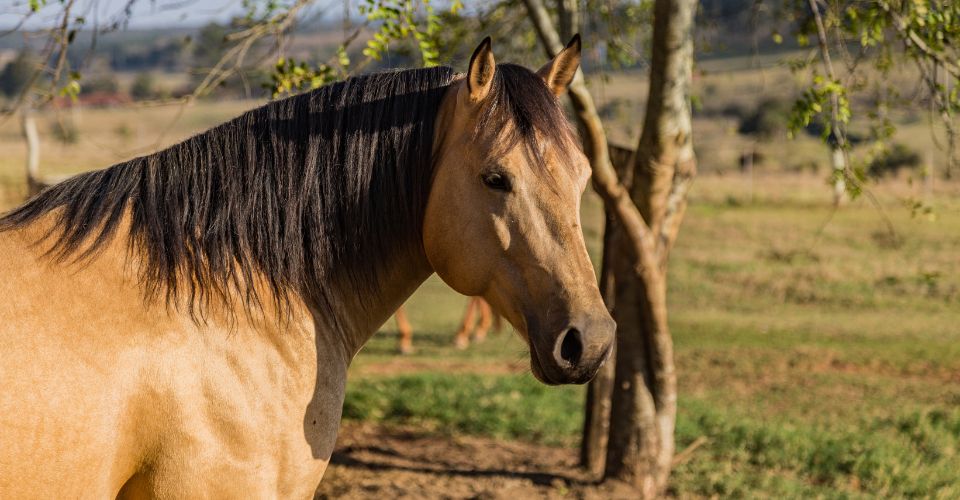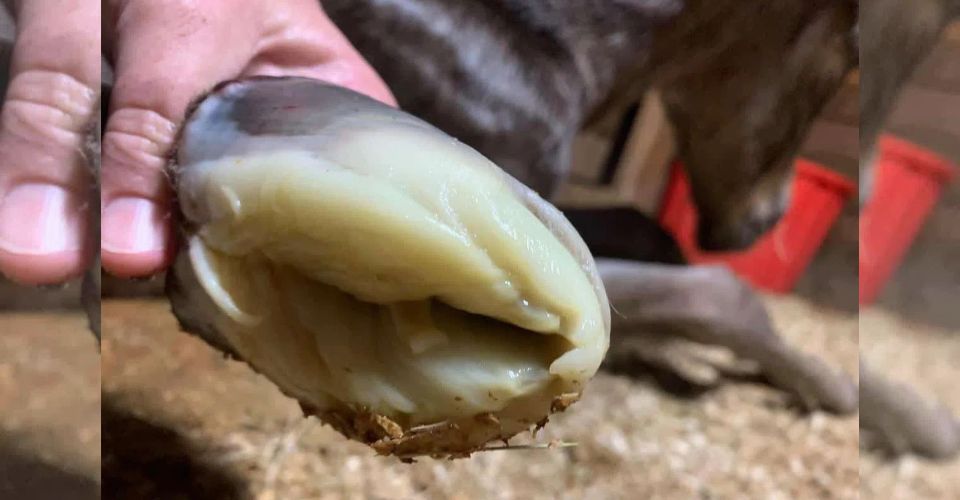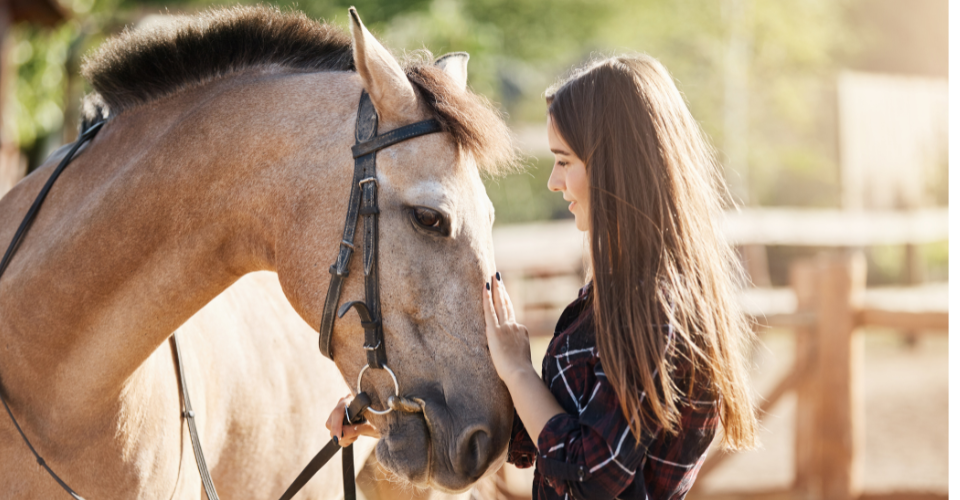A native of the Ardennes region in present-day Belgium, Luxembourg, and France, the Ardennes or Ardennais horse is a popular draft horse in Europe. This massive horse is a direct descendant of the legendary Solturé, the ancient horse that once roamed about in the Ardennes region. Ardennes horses have drawn praises from historical figures like Julius Caesar for their endurance and perseverance. They have since then participated in different wars in Europe, including the two world wars.
History of Ardennes Horse
Historical records show that the Ardennes had largely remained unchanged since the Ice Age. Noted for their hardy nature, these horses were regularly used in warfare. They charged into the enemy ranks as cavalry horses and were harnessed to transport soldiers’ critical supplies, including ammunition and artillery. Up until that point, these horses weighed around 1200 pounds and reached a height of 14 to 15 horse hands.
Things started to change when in the 19th century, Napoleon introduced the Arabian bloodline into the breed to enhance their stamina. Thanks to these horses, he made it back from his Russian campaign. The horses were again called for duty in the first and second world wars, where they were harnessed to pull vehicle supplies. Their ability to work in deep mud gave them an advantage over motor vehicles. However, as with the other horse breeds, their utility declined with mechanization.
The focus then shifted to developing larger horses for draft work and meat. Astonishing as it may sound, horse meat is quite a delicacy in some European countries like Belgium and France. Heavy draft breeds were introduced for larger Ardennes, but it wasn’t until a crossbreeding with the Belgian Draft horse that it developed into its current shape.
Ardennes Horse Breed Overview
Ardennes Horse Overview
Height: 15.3 – 16 HH
Weight: 1500 – 2200 lbs
Type: Heavy Draft
Coat Color: Bay, Iron Grey, Chestnut, Palomino, and Roan
Life Expectancy: 25 – 30 Yrs
Origin: France, Belgium, Luxembourg
Temperament: Calm
Uses: Farming, Hauling, Driving Competitions, Meat, and Rides

Head
Ardennes horse has an imposing large structure and balanced, muscular, and compact body. Their heads are large, faces broad, nostrils wide, and ears pricked. Their faces may have a straight or somewhat concave shape, while their large, gentle eyes are set in prominent eye sockets. They have a medium-length, well-set neck and an arched crest among the stallions.
Body
The crossbreeding with heavier draft horses has enabled them to have a broad structure and considerable mass. They have short sturdy legs, a short well-muscled back, and wide, strong joints. They also have their distinctive heavy feathering on their fetlocks. Their manes and tails are long and silky. They have neat, round, and strong hooves that appear smaller compared to the rest of their bodies.
Color
They are most commonly found in bay and roan color coats, but horses with chestnut, grey, and palomino colors are also found. It is rare for an Ardennes horse to have a black coat; the black color is also not accepted in the registries. In terms of patterns, only the star or blaze-shaped white markings are accepted.
Height & Weight
Ardennes are large horses; their mares reach up to 15.3 horse hands, whereas the stallions go above 16 horse hands. They generally weigh between 1540 to 2200 pounds.
Ardennes Horse Behavior & Temperament
These horses have a gentle, calm disposition, and patient demeanor, pretty much like other draft horses. Their willingness to learn and trainability has made them a favorite, both in the battleground and on the farm. New owners find it easy to maintain them because of their endearing qualities. Their sweet nature and soothing abilities have found them a spot on the therapy rides meant to heal individuals with mental illness.
Ardennes Horse Uses
Despite their huge size, these horses have an animated action and a long stride. Evolved in the harsh terrain of the Alps, these are hardy animals that can work exceptionally well in difficult hilly terrains. They can even survive chilly weather conditions thanks to their enormous size and rugged nature. These are spirited animals, willing to please and work tirelessly for long hours.
Despite machinery replacing many of the traditional roles of the Ardennes horse, it is still in use in farming establishments. They are a reliable resource for plowing, forestry, and hauling heavy loads. Their gentle attitude, smooth gait, amazing stamina, and endurance, besides the ability to do hard work, lend them popularity for driving competitions across Europe. Since they are great with people, they are also used for pleasure riding and therapeutic riding programs.
Horse meat has been part of the dietary preferences of the people in the Ardennes region since ancient times, and it remains a delicacy in certain European countries to this day. The meat was part of the reason why the horse was crossbred with the Heavy Draft horses, and it is one of the reasons for its continuous breeding to this day.
The well-built and highly useful Ardennes were used as the foundation for developing several other breeds of draft horses. Its bloodline was lent to develop the Swedish Ardennes Horse, initially considered a subgroup, it is now established as a separate breed. Other breeds coming from this one include the Russian Heavy Draft, Dutch Draft, Baltic Ardennes, Jutland, Sokolsky, and Trait Du Nord.
Ardennes Horse Diet
Considering their immense size, it is natural to think that they must require a heavy horse diet. The reality, however, is different; they are an easy breed to keep not just in terms of their behavior but also in terms of their dietary requirements. This is why it does not cost a lot to keep one of them.
Being natural foragers, these horses can easily survive on grass and hay. Their regular feed is what other horses eat, including legumes, maize, barley, and different types of grains. It is important to consult your vet about any mineral or vitamin supplement that your horse may need.
One important dietary tip would be to check its access to lush pastures. Since they are good at foraging, they are also susceptible to overeating and getting obese.
How to Care for Ardennes Horses?
Ardennes horses generally do not require a lot of care. They still need the regular grooming of a horse, proper cleaning, and routine currying to maintain a shiny, healthy coat. Since they have heavy feathering on their fetlocks, it may become a residential ground for bacteria or collect a lot of dust/mud.
It is therefore advised to properly clean and braid their fetlocks, or they may develop scratches. Besides that, they just need regular grooming, which includes keeping them clean and currying to maintain their coats.
Common Diseases Found in Ardennes Horses
These are generally healthy horses and are not particularly susceptible to specific diseases. That said, they may be prone to diseases generally affecting other draft horses.
1. Equine Polysaccharide Storage Myopathy (EPSM)
Condition: It involves the build-up of glycogen and abnormal polysaccharides in the skeletal muscles. It prevents the horse from digesting starch and sugars, resulting in the storage of un-metabolized carbohydrates in the muscles.
Symptoms: Affected horses develop muscle weakness and show exercise intolerance, unchecked sweating, and recumbence. The symptoms may either be displayed each time the horse exercises or in episodic format.
Diagnosis: The diseases may be diagnosed by conducting blood tests, muscle biopsy, or genetic testing of the equine hair.
Treatment: EPSM is treated with dietary modifications, primarily focusing on a reduction in sugar and carbohydrates and replacing them with fats.
2. Azoturia
Condition: It is a muscle damage disease caused by an underlying EPSM among draft horses.
Symptoms: Affected horses pass muscle breakdown products into the urine. As the muscles go through damage and cramping during exercise, horses show recumbence and release discolored urine.
Treatment: Equines suffering from Azoturia also need to be tested for EPSM. The treatment includes similar dietary adjustment as for the aforementioned condition and maintaining routine work for the horse.
3. Shivers
Condition: It is a neuromuscular equine disorder that affects one or both the hind limbs and tail. Horses suffering from shivers are noted to have a higher incidence rate for EPSM.
Symptoms: Horses affected by shivers find it difficult to back up, their hind thighs and hind limbs shiver when flexed, and the tail trembles when erected.
Diagnosis: Identifying the condition may be problematic in mild cases; however, it is more straightforward in advanced cases. The vet may conduct checks to rule out other causes of lameness before deciding.
Treatment: Suffering horses can only be treated with dietary adjustments, including recommended supplements, exercise, or regular work.
4. Chronic Progressive Lymphedema
Condition: It is a painful condition caused by the lymph fluid build-up in the lower limbs of the horses. As the disease progresses, horses experience swelling and develop scaling, dermal fibrosis, and nodules.
Symptoms: It is hard to notice the swelling under heavy feathering. But once the feathering is clipped, swellings, lesions, and crust formations become visible. As the name suggests, the disease progresses over the lifespan of the infected horse and needs long-term care.
Diagnosis: Initial diagnosis is made through palpations, but to get to the extent of harm, the featherings are cleared. Imaging technologies are employed to figure out the degree of impairment to the lymph drainage.
Treatment: The condition is treated by giving antibiotics and anti-parasitic treatments for infections, trimmed feathering, routine hoof cleaning, and manual drainage of the lymph.
Getting One for Yourself
With the extraordinary capabilities of this draft horse, it is natural to want one for yourself. A word of caution here, even though it is a popular breed in Europe, it is still a rare horse breed. They were only introduced to the U.S. in the early 20th century. Many of the early imports did not occur under the title of Ardennes; instead, some of them arrived as Belgian Draft horses while others were thought to be French Draft horses.
Some of the enthusiasts did import the breed in the country, and they do breed on their farms, but it is not that common. They have been reported to be easy to maintain and cheaper to keep, but buying a horse that is not so common may cost you, especially if it comes from a celebrated pedigree. Importing one is going to be an altogether different ball game.
Final Words
Ardennes Horse is a true gentle beast. They are magnificent, huge horses with a lot of heart. They work efficiently in extreme weather conditions, unforgiving terrains, and with few dietary requirements. They are good-natured and would be wonderful to keep for small farms and similar establishments. Owners can also train them for therapy rides or competitive driving.





